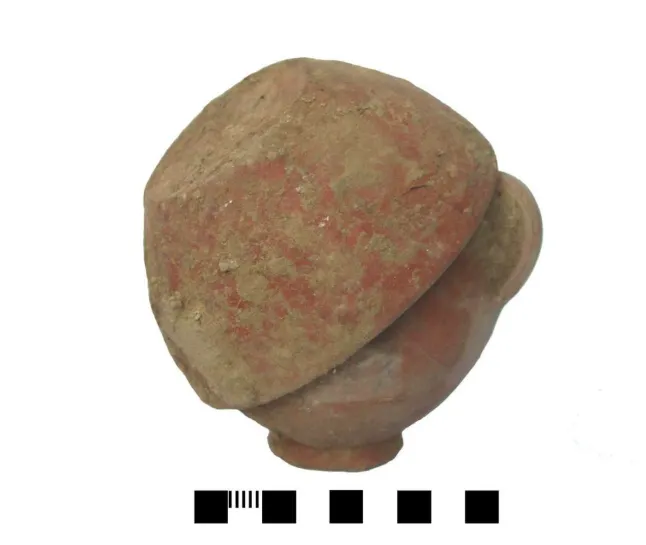
Rich, well-preserved graves from the Roman period, approx. 1800 years ago, have been discovered by Polish archaeologists during excavations near the legionary camp Novae (near Svishtov) in Bulgaria. This is a rare and unexpected discovery in the Balkans, the discoverers say.
"The people buried in the graves we discovered were probably associated with the Roman legion - perhaps even soldiers. This is indicated by metal parts of outfits. Interestingly, among the burial offerings there were jugs of wine - preserved inside in the form of sediment on the walls" - told PAP head of excavations in Novae, Dr. Agnieszka Tomas from the Institute of Archaeology, University of Warsaw, who made the discovery with her team in August.
The graves also contained ceramic lamps and preserved elements of clothing, including metal parts of military belts and shoes - buckles and rivets. These, however, are in poor condition, because they were consumed by fire during the ceremony of burning corpses.
Archaeologists have only found two graves, but in their opinion it is an important and rare find. "These are the first graves from the Roman period preserved in this condition in this area" - emphasises Tomas. Until now, archaeologists only had reports of similar finds in this area discovered accidentally or by illegal searchers. Luck smiled on them in Novae: not only did the graves remain almost intact for nearly 2,000 years, they were not touched by present-day robbers. Researchers were able to prepare a complete documentation of the find. They hope to find more burials during the work planned for 2019.
Preliminary analysis shows that men were buried in both graves. In one case, where the bones were less damaged, anthropologist made a preliminary determination that the deceased was a fairly young person. Both bodies were burnt elsewhere, and the remains were placed in wooden boxes, of which only iron nails have survived to this day. Equipment, including coins with images of Roman emperors, supports the conclusion that the deceased were men. The head of excavations added that coins with female images were usually placed in women`s graves.
"A coin was given for the way to the afterlife, because it was believed that the deceased would have to cross a river and the ferryman would expect payment" - explains Tomas.
The archaeologist reminds that Roman legionaries came from various areas of the Empire. Therefore, the burial rites varied - it was not always cremation.
"Interestingly, in the case of the graves we discovered in Novae it is possible that the cremation ritual was repeated in the grave. The incinerated corpses with a dozen or so grave offerings were covered with large ceramic plates, forming a gable-roofed structure" - Tomas describes.
The graves discovered by Polish archaeologists are in the area of the remains of a civil settlement located east of the Roman legionary camp in Novae, today`s northern Bulgaria. Archaeologists received funding from the National Science Centre for surveying the area.
"The fact that Roman troops were stationed in camps and forts located throughout the Empire is well-known. But not everyone knows that there were vast civilian settlements around the camps and forts. They are the focus of our research" - says Tomas. She describes that merchants, service providers and families of legionnaires and veterans lived in those settlements. They were melting pots of cultures, languages, traditions, places of coexistence of various social groups. In the second half of the third century, when barbarian invasions intensified and the Roman Empire was in crisis, the camps became shelters for civilians, and later evolved into late-Roman cities.
Dr. Tomas` expedition is one of three Polish missions in Novae. The other two are the expedition of the Antiquity of Southeastern Europe Research Centre University of Warsaw headed by Prof. Piotr Dyczek and the expedition of the Adam Mickiewicz University in Poznań, headed by Dr. Elena Klenina. In addition to Polish researchers, Bulgarian archaeologists under the supervision of Prof. Evgenia Gencheva also work in the area.
PAP - Science in Poland, Szymon Zdziebłowski
szz/ agt/ kap/
tr. RL
Gallery (5 images)
-
 1/5Photo: A. Tomas
1/5Photo: A. Tomas -
 2/5Photo: T. Dziurdzik
2/5Photo: T. Dziurdzik -
 3/5Photo: A. Tomas
3/5Photo: A. Tomas -
 4/5Photo: E. Jęczmienowski
4/5Photo: E. Jęczmienowski -
 5/5Photo: T. Dziurdzik
5/5Photo: T. Dziurdzik













